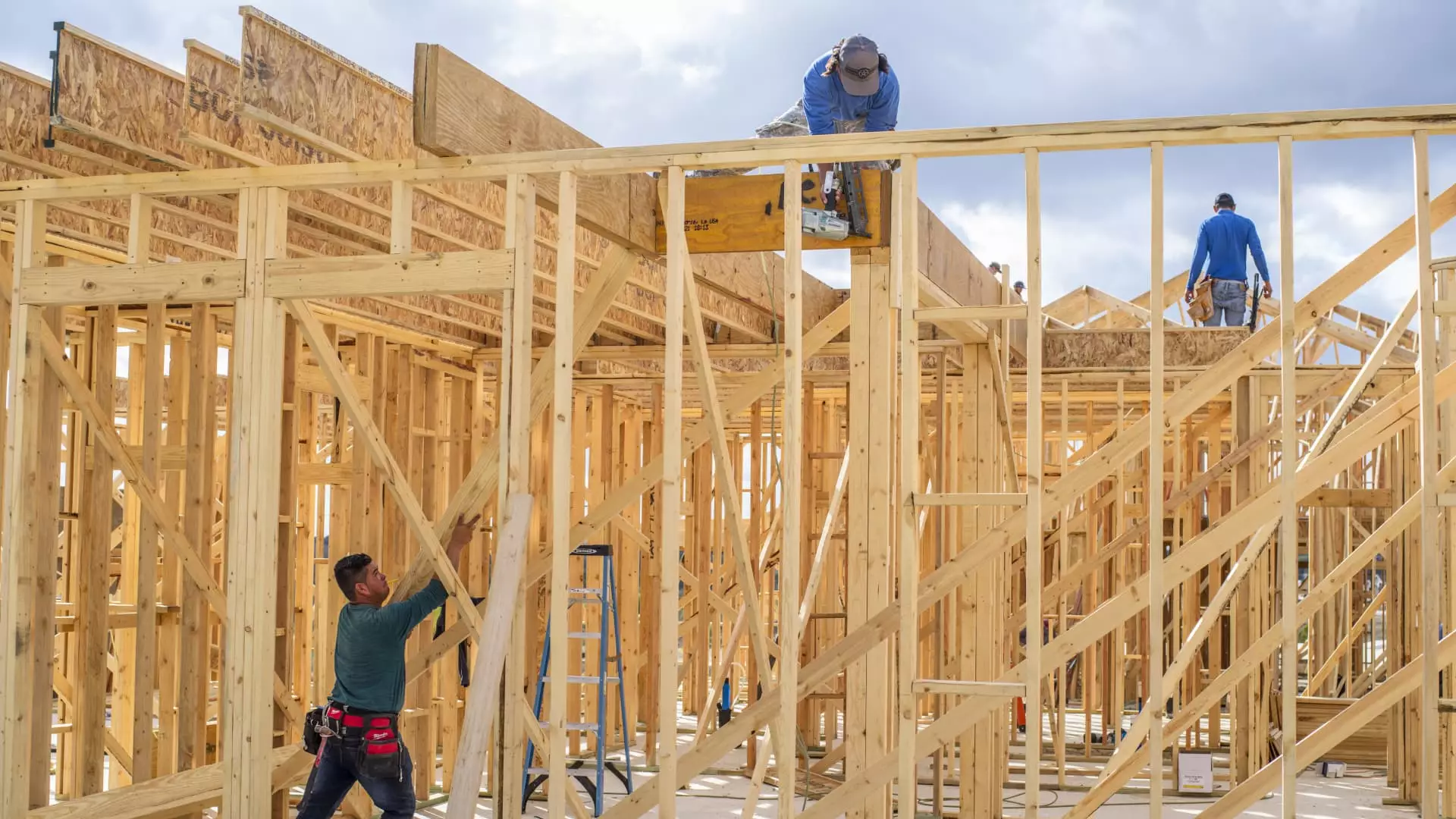The atmosphere surrounding single-family homebuilders in the United States has taken a notable downturn, as evidenced by a sharp decline in sentiment recorded in the National Association of Home Builders’ (NAHB) Housing Market Index (HMI). This downturn, which marks the lowest level in five months, signals significant underlying concerns that go beyond simple market fluctuations and reflect broader economic pressures.
In February, the HMI plummeted by five points to a reading of 42, slipping below the critical threshold of 50, which is deemed indicative of negative sentiment. When analyzed historically, the index reveals a stark contrast to its performance just a year ago, when it rested at 48. The downward trend can be traced back to a convergence of factors that have led homebuilders to reassess their market expectations, particularly in light of impending regulatory changes and rising costs.
As articulated by NAHB Chairman Carl Harris, the hopes for pro-development policies may linger, but the overshadowing policy uncertainty has forced a profound recalibration of expectations among builders. This recalibration is crucial as it may influence the overall supply of new homes entering the market—the very pulse of the housing sector.
Digging deeper into the components that comprise the HMI, it is evident that various metrics indicate struggling conditions. The current sales conditions saw a decrease of four points to a reading of 46—an alarming development for builders who may rely heavily on the strength of existing demand. Furthermore, buyer traffic has also dwindled, falling three points to a mere 29, which suggests that fewer potential homeowners are engaging in the market.
Perhaps the most alarming sign for builders was the 13-point drop in sales expectations for the upcoming six months, bringing that component down to 46—the lowest recorded since December 2023. Such a dramatic shift not only reveals a pessimistic outlook but also raises concerns about the sustainability of current business practices amid changing market dynamics.
Homebuilders are currently confronted with elevated mortgage rates, which have consistently hovered above 7% recently after a brief period of stability around 6%. This increase in mortgage costs has further exacerbated affordability challenges for buyers, dampening their willingness to enter the market. The combination of rising home prices—which are significantly higher than a year earlier—and high mortgage rates has effectively squeezed potential homebuyers out of the market.
Additionally, the looming threat of tariffs has intensified concerns among builders, particularly regarding materials sourced internationally. With significant portions of essential items, such as appliances and softwood lumber, imported from countries like Canada and Mexico, the uncertainty surrounding potential tariffs is contributing to rising costs. As noted by NAHB Chief Economist Robert Dietz, this situation leaves builders feeling apprehensive about their operational expenses.
The sharp drop in builder sentiment has broader implications for the housing market, particularly as it approaches the critical spring selling season. When builder sentiment wanes, it often foreshadows a reduction in supply, which could result in heightened competition among buyers for fewer available homes. This scenario may further exacerbate affordability issues, making it increasingly difficult for potential homeowners to enter the market.
Furthermore, the trend of builders lowering prices as a sales strategy has also begun to wane, with only 26% doing so in February—a decline from 30% in January. This shift may indicate that sales incentives, once effective in drawing in buyers, are losing their potency in a market characterized by high prices and elevated mortgage rates. As builders grapple with these challenges, they may find themselves at a crossroads, faced with dwindling options to entice buyers.
The sentiment among single-family homebuilders is a reflection of a complex interplay of market conditions, regulatory uncertainties, and economic pressures. As they navigate this environment, homebuilders must adapt to evolving dynamics, recognizing that the road ahead may demand innovative solutions to weather the storm of declining sentiment, rising costs, and wavering buyer interest. The coming months will be critical not only for builders but also for potential homebuyers facing an increasingly challenging landscape.

